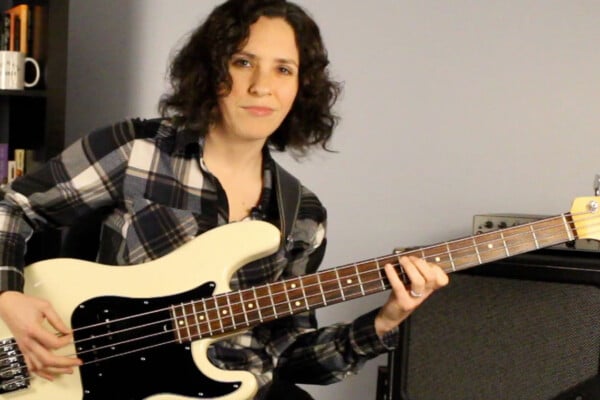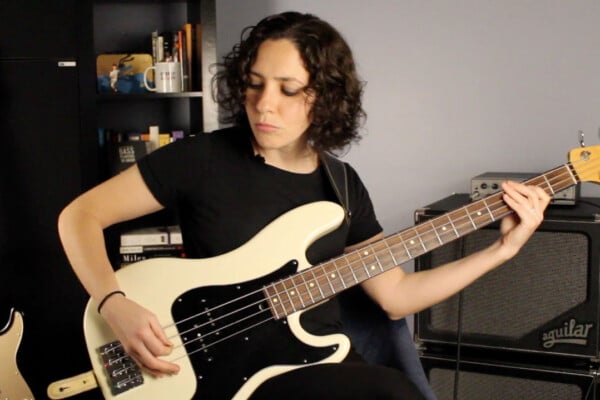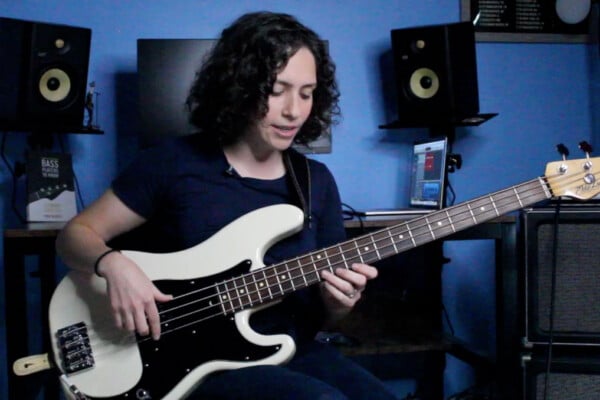Untold Secret to Melodic Bass lesson: Embellishment of Fixed Bass Lines
So far we’ve covered Anchors, Pivots, and now Lead-Ins… This is all fine for jazz, you might be thinking, but what the heck does this have to do with the stuff I’m playing?
The principles of melodic construction are valid and useful for ANY kind of music! Let’s explore what we might be able to do in a context where there’s more specific stuff dictated by a composed bass line.
Embellishment of Fixed Bass Lines
After I passed the audition for Horace Silver’s band, others who had played on the band previously warned me that Horace wrote all these fixed bass lines, and you had to play them without variation. This proved not to be entirely accurate; I can credit my experience with Horace for some of my insight as to what makes a bass line work. Horace wrote bass lines with a particular structure, but if the anchors and pivots were covered as predetermined by his fixed line, there was considerable room for variations in the lead-ins. Horace’s instinct, what he wanted and expected to hear—his tolerance for variation—was very instructive to me.
Here’s the fixed line for “Song For My Father”:
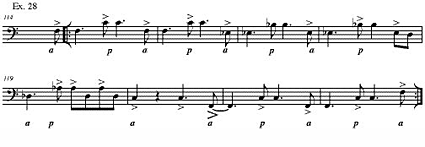
Here is a “non-permissable” variation… can you tell why this would make Horace uncomfortable? How many things do you think might be wrong with these 4 bars?

Here’s an example of a line he might tolerate:

What was present in Ex. 30 that was also present in the original line?
There were some lines he wrote that were specific extended melodies, and it was suggested to me by the drummer Harold White that it would help to make up a phrase to recite in my head (or sotto voce) that fit the melody, and make a chant out of it. This worked quite well, and it was really powerful to experience the performance of a piece as a form of prayer or meditation.

Anchors, Pivots and Lead-Ins in Static Harmony
What if we have 8 bars or more of a particular chord? Or maybe even a whole song? My weakness at this particular task was gently pointed out by Horace when he turned and threw me a solo on his tune “Sister Sadie” and said, “Walk!” I hadn’t a clue, at the time (1978). I had to learn how to make melodies—and not just a few melodies, but really how to compose a melody on the fly, in order to be successful in this.
Here are some examples of ornamentation on a static chord:
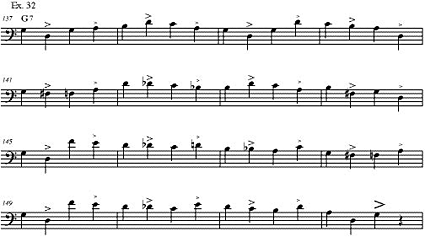
What are some of the melodic devices we employed? How did we create a back-and-forth sense within the static harmony? Were all lead-ins stepwise? Were there other chords suggested by the shape of the line—diatonic neighbors, perhaps? Pentatonics? Sequences?
A very good exercise is to play as long as we can stand on just one chord, and create structures based on the underlying harmony, set up expectations, play sequences, create tension and resolution—in short, compose.
Here is a brief example of development of anchors and pivots using various melodic lead-ins in a sixteenth-note environment. Notice the placement of the main accent—it’s on the “one.” James Brown stated in an interview on PBS some years ago, that with regard to his style of music, “it’s all about the ONE!” Here the line gets a real feel to it as the lead-ins are slightly underplayed and the anchors and pivots are accented. Try exaggerating the amount of accent and see what happens to the “feel:”
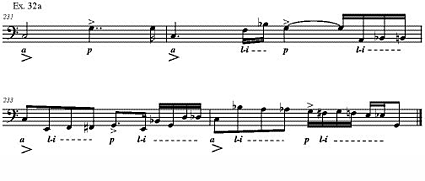
Continuing next week with Internal dynamics!

